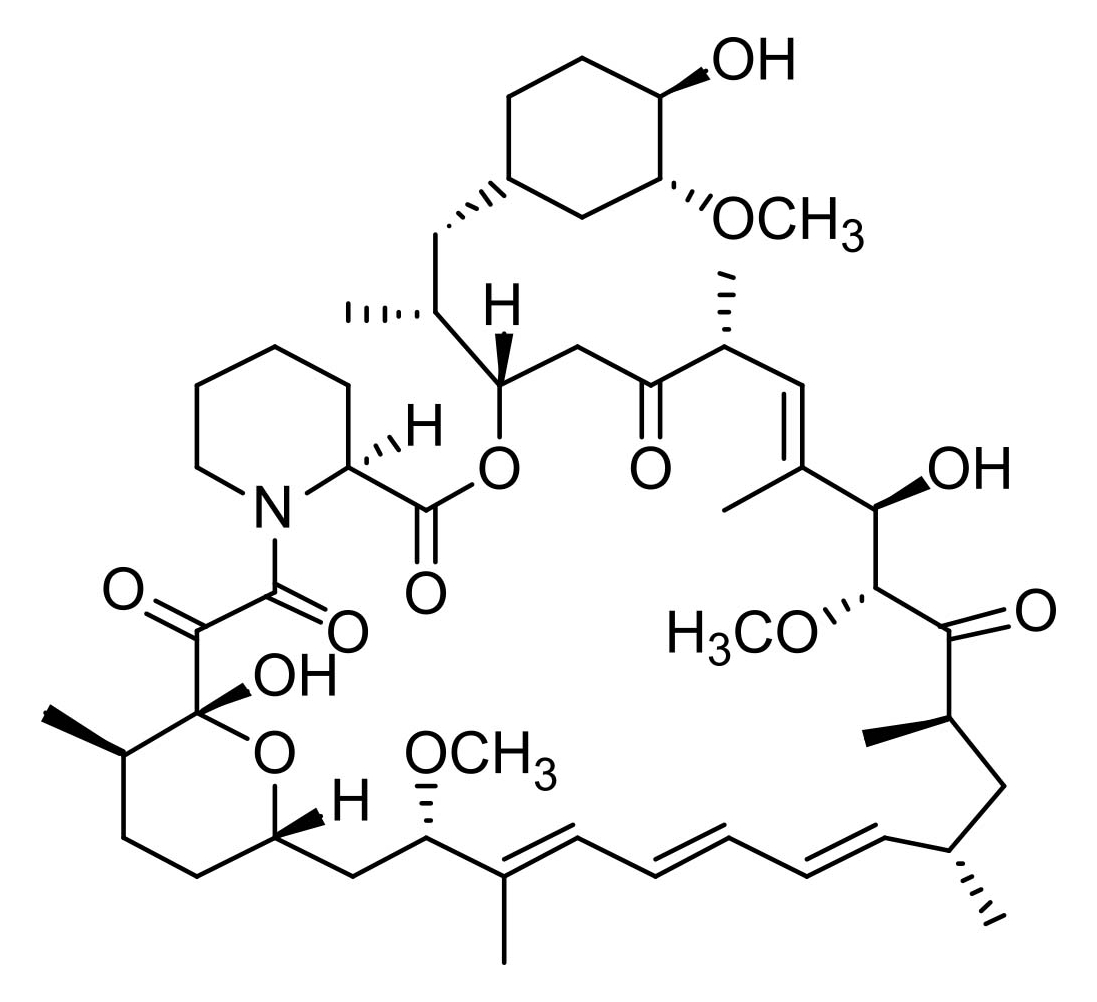Rapamycin
Rapamycin
$350.00 - 25 mg
$100.00 - 5 mg
All prices in Australian dollars
- Code
- BIA-R1183
- Synonyms
- Sirolimus, AY 22989, SIIA 9268A
- CAS #
- 53123-88-9
- Molecular Formula
- C51H79NO13
- Molecular Weight
- 914.2
- Purity
- >95% by HPLC
- Long Term Storage
- Soluble in ethanol, methanol, DMF or DMSO. Limited water solubility.
Download Data Sheets
Application Notes
Rapamycin is a triene macrolide discovered in 1974 as a metabolite of Streptomyces hygroscopicus found in a soil obtained on Rapa Nui (Easter Island). Rapamycin displayed potent and selective antifungal activity, notably against Candida albicans. Interest in the metabolite waned until the structural relationship to the potent immunosuppressant fujimycin (Antibiotic FK506) was recognised in the mid-1980s. This recognition led to the re-discovery of rapamycin as a highly selective antitumor and immunosuppressant. Rapamycin inhibits the activity of the protein, mTOR (mammalian target of rapamycin) which functions in a signalling pathway to promote tumor growth. Rapamycin binds to a receptor protein (FKBP12). The rapamycin/FKB12 complex then binds to mTOR and prevents interaction of mTOR with target proteins in this signalling pathway.
References
- Rapamycin (AY-22,989), a new antifungal antibiotic. I. Taxonomy of the producing streptomycete and isolation of the active principle. Vezina C. et al., J. Antibiot. 1975, 28, 721.
- Rapamycin (AY-22,989), a new antifungal antibiotic. II. Fermentation, isolation and characterization. Sehgal S.N. et al., ; J. Antibiot. 1975, 28, 727.
- Rapamycin, a potent immunosuppressive drug, causes programmed cell death in B lymphoma cells. Muthukkumar S. et al., Transplantation 1995, 60, 264.



